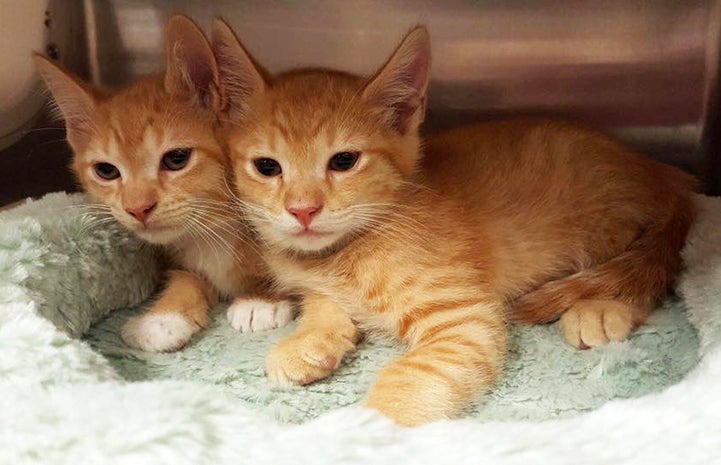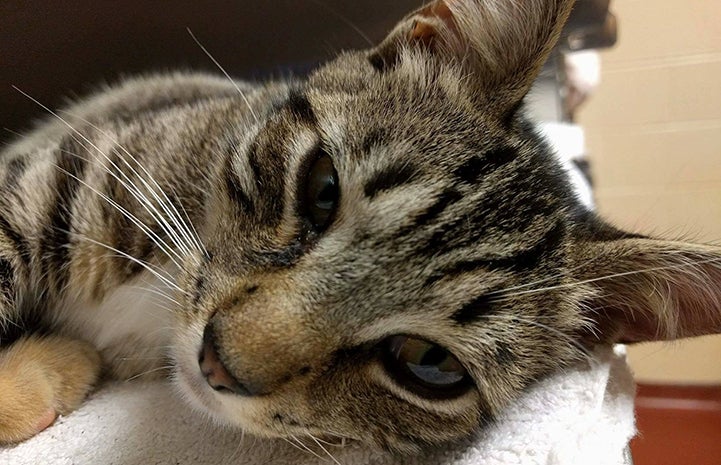‘I’m not killing cats every day anymore’

It’s an understatement to say that Eddie was upset when he first arrived at the Cobb County shelter near Atlanta, Georgia. The beautiful longhaired black-and-white cat wanted nothing to do with anyone, but that made his chances of getting adopted slim to none. But Eddie, who earned his nickname “Angry Eddie,” was lucky. By the time he ended up at the shelter, a program designed to save cats had already been underway for more than a year. And that saved his life.
Best Friends community cat programs
Not long ago, every cat arriving at the shelter that appeared to be either ownerless or unsocialized to people was killed. Unfortunately, without the right programs in place, this is a common practice in shelters across the country. But that all changed in February of 2016 when Best Friends entered into a community cat program (a partnership with Cobb County) to help save those cats who formerly never made it out of the shelter alive.
Now all cats who find their way to the shelter have a better chance than ever before to get the help they need and move on to new homes ― even Eddie, who made quite an entrance when he first showed up.
More about Best Friends in Atlanta
How the Cobb County community cat program works
Animal control officer Amy Chapman has been with Cobb County for nearly eight years, and as the unofficial “cat lady” on the force, she’s all too familiar with the cat and kitten challenges facing shelters, especially in the busy summer months.
There’s space for about 100 cats in the shelter at any one time. It’s space that quickly fills, and when it does, cats’ lives are at risk. When the community cat program started in February of 2016, the biggest, most immediate change was that stray cats unsocialized to people no longer would automatically be killed. As long as they are healthy and appear to have a food source, Best Friends spays or neuters them and then returns them to their neighborhoods. The very first day the program was in place, things changed in a big way.
Amy says, “Before the community cat program started we had nowhere for the feral cats to go, so every single feral cat was euthanized.”
Today, since cats unsocialized to people are no longer killed, they aren’t taking up cage space in the shelter. Best of all, because they are spayed or neutered, when they’re put back into their neighborhoods, they no longer contribute to a future population of free-roaming cats and kittens.

Help for cats in the shelter
Meanwhile, cats who do end up in the shelter get more time for someone to adopt them, more comfort during their stay, and more help if they have medical or behavioral challenges. That’s why, when Eddie arrived, despite his challenging behavior, he, too, was given a chance.
Amy says, “When Eddie first got here, he was very upset and literally launched himself at the door of his cage trying to get at the officer who was taking care of the cats that day.”
With more space freed up at the shelter since the community cat program started, the staff was able to move Eddie into a room where he wouldn’t hurt a potential adopter, and where he had time to settle in. That made all the difference.

“Angry Eddie” wasn’t so angry anymore
“It took about three weeks, but then we were able to pet him and pick him up,” says Amy. Soon he was meowing at them and rubbing up against the front of his cage, and they felt he was ready to try again at meeting new people. Since “Angry Eddie” wasn’t so angry anymore, an adopter fell for his pretty, black-and-white fluffy face. He went home that day.
Amy says, “The fewer cats we have, the better we’re able to care for them. Having opportunities to give a cat like Eddie a chance is huge. Truly, his life was saved because we had the time to do it.”
Looking toward lasting change
While the community cat program made it possible to immediately save lives by handling feral or community cats differently, as well as giving more time to cats staying in the shelter, the biggest impact will be from increased spay/neuter in the area. It’s an impact that takes time to see, but it is a lasting solution.
More about Best Friends community cat programs
Carrie Ducote, a Best Friends community engagement and outreach manager in Atlanta, says: “From February 2016 to May 2017, 958 cats have been trapped, neutered and returned, and 492 cats have been returned to their neighborhoods after arriving at the shelter and getting spayed or neutered.”
The work is paying off, because it means that fewer cats and kittens end up in the shelter, and more are being saved.
“The save rate for cats at Cobb County Animal Control was 94 percent from January to June, which is especially impressive given that it includes kitten season,” says Carrie.
Not only has the community cat program already saved hundreds of cats, but it also has had an immense impact on Amy’s job as an animal control officer. “I’m not killing cats every day anymore,” she says.
Instead she’s helping cats like Eddie, who need extra time and attention. “It’s nice when you’re saving more lives. In the time I’ve been here, we’ve worked hard to increase the save rate, and it’s a tough and uphill battle. It takes time. But it is possible.”
Want to help animals? Become a Best Friends member.

Photos courtesy of Cobb County